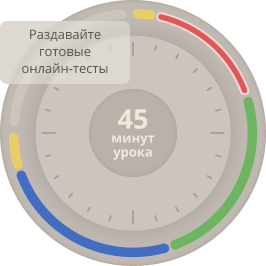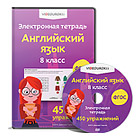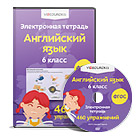Personal computers and Computer Programming
Learn the new terms
competitive operating systems — конкурирующая операционная система
IBM (International Business Machine) — фирма по производству компьютеров
to enter the fray — ввязаться в драку
computer of choice — лучший компьютер
to fall by the wayside — остаться в стороне; уступить дорогу
to survive onslaught — выдержать конкуренцию
word size — размер слова; разрядность двоичного слова
soft-copy output — вывод электронной, программно-управляемой копии
hard-copy output — вывод «твердой» печатной копии
online storage — неавтономное хранение данных в ЗУ
offline storage — автономное хранение данных отдельно от компьютера
input media — носитель для входных данных
output media — носитель для выходных данных
general -purpose — универсальный; общего назначения
stand-alone — автономный
to plug in — подключать; подсоединять
leisure activities — досуговая деятельность
Text 1. Personal Computers
Personal computers are supposed to appear in the late 1970s. One of the first and most popular personal computers was the Apple II, introduced in 1977 by Apple Computer. During the late 1970s and early 1980s, new models and competitive operating systems seemed to appear daily. Then, in 1981, IBM entered the fray with its first personal computer, known as the IBM PC. The IBM PC quickly became the personal computer of choice, and most other personal computer manufacturers fell by the way-side. One of the few companies to survive IBM's onslaught was Apple Computer, which is sure to remain a major player in the personal computer marketplace. In less than a decade the microcomputer has been transformed from a calculator and hobbyist's toy into a personal computer for almost everyone.
What is a personal computer? How can this device be characterized?
First, a personal computer being microprocessor-based,on its central processing unit, called a microprocessor unit, or MPU, is concentrated on a single silicon chip.
Second, a PC has a memory and word size that are smaller than those of minicomputers and large computers. Typical word sizes are 8 or 16 bits, and main memories range in size from 16 К to 512 K.
Third, a personal computer uses smaller, less expensive, and less powerful input, output and storage components than do large computer systems. Most often, input is by means of a keyboard, soft-copy output being displayed on a cathode-ray tube screen. Hard-copy output is produced on a low-speed character printer. A PC employs floppy disks as the principal online and offline storage devices and also as input and output media.
Finally, a PC is a general-purpose, stand-alone system that can begin to work when plugged in and be moved from place to place.
Probably the most distinguishing feature of a personal computer is that it is used by an individual, usually in an interactive mode. Regardless of the purpose for which it is used, either for leisure activities in the home or for business applications in the office, we can consider it to be a personal computer.
Text 2. Programming Languages
Programming has been with us for over 40 years but it wasn’t born at the time as the first computers. When the first early computers were built, there were no programming languages. First machines were initially programmed by flipping toggle switches and changing cables. Needless to say, this was a slow, awkward process. People began quickly searching for a better, faster way to issue instructions to the computer.
The result was what we call Programming Languages. The programming languages fall into three general categories. They are comprised of ones and zeros, and are directly understood or executed by hardware. Electronic circuitry turns these 0s and 1s into the operations the computer performs.
Assembly Languages are powerful programming tools because they allow programmers a large amount of direct control over the hardware. They offer programmers greater ease in writing instructions but preserve the programmer’s ability to declare exactly what operations the hardware performs. Assembly languages are machine-specific, or machine-dependent. Machine-dependent means the instructions are specific to one type of computer hardware. Assembly languages are still provided by most computer manufacturers – they can’t be translated and used on another computer.
As high-level languages are a method of writing programs using Englishlike words as instructions, they allow users to write in a notation with which they are familiar, e.g., Fortran in mathematical notation, Cobol in English.
High-level programming languages combine several machine language instructions into one high-level instruction. Low-level languages required only a single letter or a short mnemonic a term, or a word that is easy to identify, such as ADD for addition. High-level language requires just a single statement.
FORTRAN was created in 1954 by John Backus. And it was one of the first high-level languages for FORmular TRANslator. Fortran allows programmers to calculate complex formulas with a few source code instructions. It is used for scientific and mathematical problems. The source program is written using combination of algebraic formulas and English statements of a standard but readable form.
Another high-level machine language is Cobol. Cobol was developed by the Conference on Data Systems Languages. Cobol was issued by the US Government Printing Office in 1960. Cobol stands for Common Business-Oriented Language. The source program is written using statements in English. It was made for business industry, government and education applications. This means that Cobol «has a place for everything» and requires programmers to «put everything in its place». Cobol programs are separated into four sections, called divisions:
1. The Identification Division (раздел идентификации) documents the program name, the programmer’s name (s), dates and any other important identification information.
2. The Environment Division (раздел оборудования) names the computer hardware, including the CPU and I/O devices.
3. Data Division (раздел данных) identifies all associated files and working storage sections of the program.
4. The Procedure Division contains all the instructions in the Cobol program.
Cobol divisions are further divided into paragraphs and sections. This structure helps programmers write code efficiently and with a minimum of repetition and confusion.
Algol was developed as an international language for the expression of the algorithms between individuals, as well as programming language. It was introduced in the early 1960s. Algol stands for ALGOrithmic Language. This language is used for mathematical and scientific use. An Algol program consists of data items, statements and declarations, organized into a program structure BASIC or the Beginners AU-purpose Symbolic Instruction Code, was developed over a period of years by professors John Kemeny and Thomas Kurtz and students in the computer science program at Dartmouth College. It was released in 1965. In most versions, BASIC is an unstructured language. The original Basic was easy to learn allowing computer users to write simple programs within a few minutes.
Exercises
1. Fill in the gaps necessary words or expressions:
1. First machines were ..... by flipping toggle switches and ..... .
2. The programming languages fall into ..... .
3. They are comprised of ..... and ..... .
4. ..... are powerful programming tools.
5. Machine-dependent means ..... .
6. A high-level language is a language in which ..... .
7. ..... is an expression of instruction in a programming language.
8. ..... allows programmers to calculate complex formulas with a few source code instructions.
9. ..... stands for ALGOrithmic Language.
10. Basic uses ..... .
2. Fill in the prepositions:
1. Programming has been ..... us for over 40 years.
2. People began searching ..... a better, faster way to issue instructions to the computer.
3. They offer programmers greater ease ..... writing instructions.
4. Assembly code ..... a Prime mini won’t work ..... a Digital mini.
5. Assembly languages were the first bridge ..... the English Language and the computer’s binary language.
6. A statement translates ..... one or more instructions ..... the machine language level.
7. System Commands tell the operating system how to work ... Basic programs.
3. Answer the questions.
1. When did the first personal computer appear?
2. What was one of the first PC model?
3. What is a personal computer? What are the four main characteristics of a PC?
4. What does the term * microprocessor-based" mean? What are the typical word sizes of a PC?
5. How is input carried out in personal computers?
6.What principle storage devices do PC use?
7. What kind of a system is a PC?
8.What differs personal computers from large computer systems?

 Получите свидетельство
Получите свидетельство Вход
Вход












 Методическая разработка: "Personal computers and Computer programming" (44 KB)
Методическая разработка: "Personal computers and Computer programming" (44 KB)
 0
0 495
495 9
9 Нравится
0
Нравится
0





